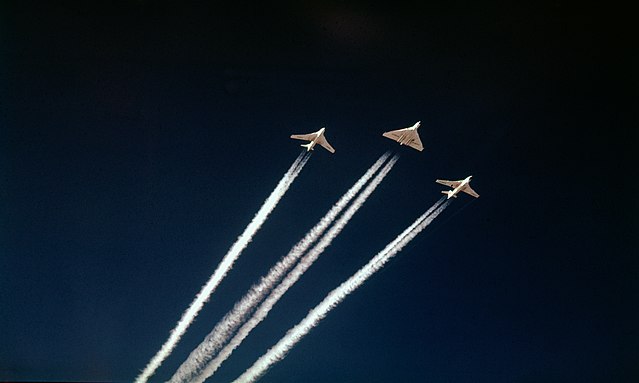The Hawker Tempest is a British fighter aircraft that was primarily used by the Royal Air Force (RAF) in the Second World War. The Tempest, originally known as the Typhoon II, was an improved derivative of the Hawker Typhoon, intended to address the Typhoon's unexpected deterioration in performance at high altitude by replacing its wing with a thinner laminar flow design. Since it had diverged considerably from the Typhoon, it was renamed Tempest. The Tempest emerged as one of the most powerful fighters of World War II and at low altitude was the fastest single-engine propeller-driven aircraft of the war.
Hawker Tempest
Painting of two Tempest aircraft attacking a V-1 flying bomb in the sky above a farmhouse.
Tempest I prototype HM599 with later bubble canopy; when first flown, it had the "car-door" canopy and small tail unit.
First prototype Tempest Mk. II LA602, again with the small tail unit.
The Royal Air Force (RAF) is the air and space force of the United Kingdom, British Overseas Territories and Crown Dependencies. It was formed towards the end of the First World War on 1 April 1918, becoming the first independent air force in the world, by merging the Royal Flying Corps (RFC) and the Royal Naval Air Service (RNAS). Following the Allied victory over the Central Powers in 1918, the RAF emerged as the largest air force in the world at the time. Since its formation, the RAF has played a significant role in British military history. In particular, during the Second World War, the RAF established air superiority over Hermann Göring's Luftwaffe during the Battle of Britain, and led the Allied strategic bombing effort.
A Spitfire and Hurricane, which both played major roles in the Battle of Britain.
The Avro Lancaster heavy bomber was extensively used during the strategic bombing of Germany.
The RAF V bomber force was used to carry both conventional and nuclear bombs.
The Tornado played an integral part in RAF operations from 1991 until its retirement in 2019








